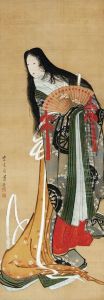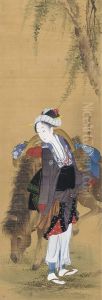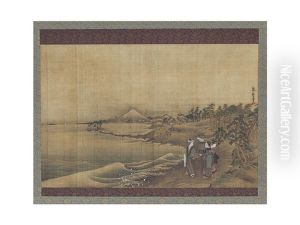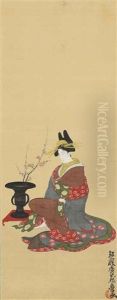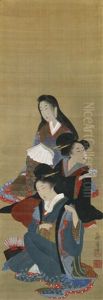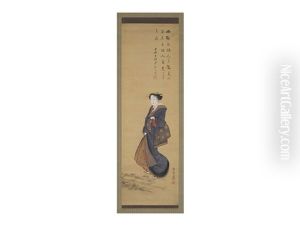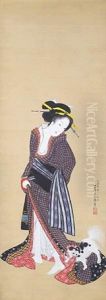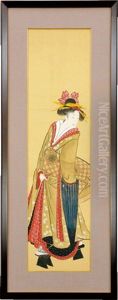Kitagawa Fujimaro Paintings
Kitagawa Fujimaro was a Japanese ukiyo-e artist who lived during the late Edo and early Meiji periods. While not as widely recognized as some of his contemporaries, such as Utagawa Hiroshige or Katsushika Hokusai, Fujimaro made contributions to the world of Japanese woodblock prints, particularly within the genre of yakusha-e, which depicted actors from the kabuki theater. Fujimaro was born in 1828, at a time when the ukiyo-e style was flourishing, with artists creating prints that captured the vibrant urban culture of cities like Edo (modern-day Tokyo).
Fujimaro's work is characterized by the use of bold lines and a keen attention to detail, which was typical of the Utagawa school. He was likely a student of Utagawa Kunisada, also known as Toyokuni III, who was one of the most popular and financially successful designers of ukiyo-e woodblocks in his time. Under Kunisada's guidance, Fujimaro would have learned the techniques and styles that dominated the art of woodblock prints in this period.
During his career, Fujimaro produced a number of actor prints, showcasing the dramatic poses and expressions that were key elements of kabuki performances. His works often included the lavish costumes and makeup that were trademarks of the kabuki theater, and he captured the energy and dynamism of the actors on stage. However, his career seems not to have achieved the same level of fame as some of his peers, and as a result, information about his life and the breadth of his work is not as comprehensive.
Kitagawa Fujimaro's life spanned a period of significant change in Japan. The Meiji Restoration in 1868 marked the end of the feudal shogunate and the restoration of imperial rule, leading to rapid modernization and westernization. These changes had a profound impact on the arts, as traditional forms like ukiyo-e were gradually eclipsed by new artistic movements and technologies, including photography. Fujimaro passed away in 1889, just as the Meiji period was setting the stage for Japan's emergence as a modern nation.
While Kitagawa Fujimaro's legacy may not be as prominent as some of his contemporaries, he remains a part of the rich tapestry of ukiyo-e artists whose work offers a window into the cultural life of Japan during a pivotal era in its history. Collectors and scholars of Japanese art continue to study his prints, and his contributions to the genre of yakusha-e help to preserve the memory of the kabuki theater during the late Edo period.

